Downtown is in many ways ... the face of the city, it’s the living room for the entire city, it’s where the whole city should come together as a community to celebrate.
Kurt Weigle
In this episode of Metro Blueprint, experts take a deep dive into how St. Louis is using office-to-residential conversions to build affordable housing and a vibrant downtown. Tracy Hadden Loh, a fellow at Brookings, and Kurt Weigle, senior vice president and chief downtown officer at Greater St. Louis, explain how cities can look to St. Louis as a model for redeveloping their own downtowns.
- Listen to Metro Blueprint on Apple, Spotify, or wherever you like to get podcasts.
- Watch episodes on YouTube.
- Learn about other Brookings podcasts from the Brookings Podcast Network.
- Sign up for the podcasts newsletter for occasional updates on featured episodes and new shows.
- Send feedback email to [email protected].
Transcript
[“doors opening”; music]
PUENTES: Hi, I’m Robert Puentes, vice president and director of Brookings Metro. I’m also the host of Metro Blueprint, a new podcast from the Brookings Podcast Network. Every two weeks a different Brookings Metro scholar and a guest will discuss ideas and action to create more prosperous, just, and resilient communities in America.
Our scholars and their guests will discuss specific research findings and policy actions to improve the well-being of people and their communities. Topics will include economic and workforce development, climate and the built environment, changing demographics, place-based policymaking, the future of work in the age of Artificial Intelligence, and much, much more.
America’s experiencing its worst housing crisis of the post-World War II era at the same time office vacancy rates are rising. Is there a single solution to both problems? Cities nationwide are converting offices into housing for a surprising range of reasons using a wide range of tools. And in this episode of Metro Blueprint, Brookings Fellow Tracy Hadden Loh, and Kurt Weigle, who’s a senior vice president and chief downtown officer at Greater St. Louis, discuss the role of office to residential conversions to address urban problems in St. Louis.
[music]
You can learn more about this podcast on our website, Brookings dot edu slash MetroBlueprint.
And now, here’s Tracy and Kurt.
LOH: Thanks, Rob. Doom loop, office apocalypse, death spiral. These are the kinds of media headlines we’re seeing to describe what’s happening to downtowns as hybrid and remote work have become the new normal. But what is the doom loop, really? Change may sometimes come in disruptive spurts, but it’s also constant. What we need from the places we live and work—the economy, demographics, climate—is always evolving.
So places need to adapt, which requires flexibility, information, and resources. But we know access to those requirements isn’t even across the country. So some places are resilient and nimble, while others are having a hard time. Once your place starts having a hard time, it’s hard to stop. You’re at a competitive disadvantage in meeting the needs of residents and employers. So how can a place break the doom loop?
Kurt, thanks for joining me today. Let’s dive in.
WEIGLE: It’s great to be with you. Thanks Tracy.
LOH: So Kurt, office to residential conversion in St. Louis is not new. I noticed when I was walking around in your city that there’s quite a few residential buildings that look to previously be offices. What’s up with that?
[2:56]
WEIGLE: You know, we’ve had a couple of rounds of converting older buildings to newer uses. The first really goes all the way back to end of the 1990s. I remember coming here from Detroit to see what was happening in St. Louis with the conversion of former industrial and warehouse space into residential lofts. So St. Louis was on the cutting edge of that in many regards in terms of sort of mainstream cities across America. Did a wonderful job up and down Washington Avenue and you know that is still with us. We still have thousands of units of those that were converted during that time period that are part of the landscape of downtown St. Louis today.
More recently, there’s been a few folks who saw the opportunity to take excess office space, like you’d expect, Class B, C space, and convert it to residential, and have had a pretty good run of doing that. So you’ll see buildings, oftentimes buildings that you would not necessarily expect to be residential. We tend to imagine the former warehouses and things like that, but they’ve taken very contemporary, even mid-century office buildings and converted them into residential pretty successfully.
LOH: Have you been inside? What are the apartments like?
[4:03]
WEIGLE: It’s what you would expect. It feels like an apartment, right? except it may have a floor-to-ceiling window instead of a punched window or something of that sort. So it’s definitely different, but they’ve been leasing these units for many years now, successfully.
LOH: I also noticed when I was standing in your own office that when you look out the window, there’s this beautiful white building that has a pool on top that looks like a beautiful jewel. What’s that one?
[4:33]
WEIGLE: That is the Marquette Building. And my original office in St. Louis looked out right onto that. And it really was a treat. I can understand why you love it. So that was designed and built in 1914 by Eames and Young, St. Louis firm. Was originally, or at least early in its time, a Federal Reserve building and then Boatman’s Bank building. So it’s got a storied history, including at one point there was a YMCA on the lower floors of that. So it’s served a lot of purposes, and it’s got a really important cultural place here in St. Louis.
But in 2007, it was converted not as you or I would expect today, not to apartments so you can take advantage of the historic tax credits, but directly to condos. And so that is a condo building, has been since that date. And people love that building it seems, people talk about the strong sense of community in the building, just how well maintained it is. So it really is a gem for downtown.
LOH: So, all this sounds really cool, like all these different kinds of buildings evolving over time, for sale housing, rental housing, but St. Louis is known for having lost population in the past. So who is consuming all of this new housing? How does that make sense?
[5:53]
WEIGLE: Well, especially over the last 20, 25 years and the reawakening of downtowns in America and really urban cores overall, there’s been a lot of talk about how much housing product traditionally, or when I say traditionally, over the last 70, 80 years has been built for people who really wanted downtown or an urban environment. And for decades, it was almost none.
And what we find now is that there is a group of folks who really prefer an urban environment, they prefer to be downtown. And I think largely we have not been producing enough product that appeals to them. They want the walkability, the bikeability of a downtown place. They don’t necessarily want to have a car, they want to be in a city like St. Louis that has good public transit, has fixed rail transit like we do here in St. Louis.
And let’s just say that that portion of the population is 3% of the 2.8 million people in Greater St. Louis—that would mean that we should have 84,000 people living downtown, right? for just 3%. So right now we’ve got about 11,000. So that delta is what we’re after. And we know that there’s a lot of ways to slice and dice those numbers. So maybe it’s not 84,000, but we think we’ve got a long way to go before we’ve satisfied that demand.
LOH: I see what you’re saying. It might be a niche product for a niche market, but St. Louis is a huge market.
[7:16]
WEIGLE: Right, exactly. And what we’ve seen, there have been some folks like, I’ll name names, Alex Oliver, who has found a niche actually in along Washington Avenue that I was mentioning before. Some of those lofts were done 20 years ago. It was time for a freshening. He’s really come up with the perfect recipe, which is he spends wisely in the units, in the public spaces in those buildings. He really adds a lot of amenities, modern amenities, and then he spends a lot of time on really strong management in his buildings. He took one building that was 30% occupied at one point, and now it’s well over 90% occupied.
So this gets to the point that, it’s like anything else in commerce, if you build a product that people want, sell it at a reasonable price, we will have takers.
LOH: Well, and I also think you’re also speaking to the importance of really good management. I wonder to what extent that also applies at the city level. What is the city of St. Louis doing to manage downtown as a place and to manage potential demand for this product?
[8:26]
WEIGLE: Yeah, well we just had a mayoral election here and the new mayor has voiced very strong support for downtown. We’re thrilled by that. Her name is Cara Spencer. We’ve worked with her before. She was one of the downtown alderpeople. And we think that that’s important. We had a good working relationship with the previous mayor. We’re going to continue to develop this relationship with the new mayor. And I think that—we all know this—anybody who’s been in this realm knows that when you bring together the public sector and the private sector working together toward a common goal, it’s really hard to stop.
And so I think we’re at that point in time now where we at GSL, we haven’t talked about what GSL is, but GSL is some of the most prominent brands in America are the companies that make up Greater St. Louis, Inc. Enterprise Mobility, for instance, and Purina, and Bayer, and on down the line. So these are the folks who make up Greater St. Louis, Inc. from the private side. They are committed to this work to renew the core here in St. Louis. We’ve certainly have an administration that has that same level of commitment to downtown and like I said, think we’re at beginning of a golden period.
LOH: So Kurt, when you talk about the role of the private sector, you’re not just talking about the real estate developers who are acquiring, investing, and managing these buildings. You’re talking about the private sector much more broadly. What is the interest of the private sector in what’s happening, define that broadly, in what’s happening in downtown St. Louis?
[9:58]
WEIGLE: As part of the 2030 jobs plan that was completed several years ago for Metropolitan St. Louis—not for the core, not for downtown, but obviously those being important components of it—there was a recognition of how important the core and downtown in particular are to the future of this city.
And anybody listening to this from any other city will know it’s the same everywhere. Downtown is in many ways, it’s the face of the city, it’s the living room for the entire city, it’s where the whole city should come together as a community to celebrate, sometimes to mourn, whatever it may be, but this is the place.
And folks from the outside, it doesn’t matter if it’s a new employee moving to our metro from somewhere else, or if it’s an investor or a visitor coming from Timbuktu, this is what they’re going to experience first.
And so the business community recognizes that, has committed a lot of resources already for us to advance a downtown and an urban core agenda. And is I think prepared to commit a lot more if we can get the city to commit a substantial portion of Ram settlement funds, which we can talk about maybe in a minute, to downtown.
LOH: Let’s get into that, Kurt, because I think the problem that a lot of cities are juggling in terms of expensive issues that need fixing downtown is that there are just so many other challenges that need addressing. Right? America has so many problems with inequality. You mentioned the Rams settlement. St. Louis recently got hundreds of millions of dollars from a lawsuit with the NFL and now has to figure out how to spend it. What are your thoughts?
[11:37]
WEIGLE: Well, this goes right to the core of your description of cities in America, including St. Louis, and our work downtown. So we have a plan to spend $100 million of the $280 million which is available of these Ram settlement funds. Just a short primer on that. Several citizens and public entities sued the Rams when they left, got a major multi-hundred million dollar judgment, or settlement, I should say. And $280 million of that is left in the city of St. Louis. Our plan is to spend $100 million of that downtown, and I’ll say why that’s important in a minute, but $130 million of that in some of our most disinvested neighborhoods in the city too.
This is not something that we had to be forced into, that we had to be negotiated into. We knew that it was the right thing to do to spend more of this money on disinvested neighborhoods, but we also knew that spending $100 million on downtown makes sense because downtown produces almost 20% of all the general fund revenue that comes to the city coffers every single year. Almost 20% from two square miles. And once again, this is not out of line with other cities across the United States.
And so it’s important for us to create this economic engine that can then support investment in infrastructure and social services, whatever it may be, public safety, all across the city. The other $50 million by the way would be spent on specifically on water infrastructure. We think that this is a winning solution for the entire city of St. Louis.
LOH: Kurt, what you’re talking about sounds to me it’s like prioritizing, right? You’re not just talking about prioritizing downtown, but you’re also talking about prioritizing specific neighborhoods, the city’s most disinvested. St. Louis has a lot of neighborhoods. Isn’t that kind of controversial?
[13:30]
WEIGLE: Well, I would say that we benefit in making these decisions by the fact that the city created an economic justice action plan several years ago. That economic justice action plan did a quantitative analysis of every neighborhood in the city. And so we’re able to target these funds—and I think targeting is important—on the areas that need it the most, that are on this scale generally number one or number two, which is the most in need of investment. But also places where if you target this investment in a strategic way, it can create the beachhead that can create future development for generations in those neighborhoods and then spread through other what you might consider to be marginal neighborhoods, right? So you start with some of the toughest, some of those that need the most investment, but still have assets to build from, and then you go from there.
LOH: Kurt, I’m appreciating the way that you reframe things from, like, zero sum, either or to both and. And it reminds me of the Revitalizing Downtowns and Main Streets Act. There is some federal legislation named that, but there’s also a bill in the Missouri State Legislature with that name. Can you tell us what’s in that?
[14:44]
WEIGLE: Sure. In downtown St. Louis, in St. Louis, we take advantage of the kinds of incentives that places all across America need. Federal historic tax credits, we are fortunate that we have a state historic tax credit. We were the first in the nation, I will say, in Missouri to have state historic tax credit. We have a real estate property tax abatement program when you can show that that’s necessary to make your numbers work.
But even with that, we have some properties that are so challenged that we need a little bit more. And so, probably the simplest way to look at this is an office-to-residential tax credit. Similar to the federal program that, which is not yet a program, but the concept of a program that you mentioned before. It’s a 25% tax credit for using a property that formerly was primarily office for primarily residential. So it doesn’t have to be entirely residential, but it has to be primarily residential. And it is stackable with both the state and the federal historic tax credit.
So, I will say when we pass this, it’s going to be an important and really valuable tool for us to address some of our toughest cases.
LOH: But Kurt, governments can’t provide services if they don’t collect taxes. So what’s the value to the city for offering these kinds of credits and abatements?
[16:00]
WEIGLE: Well, we are a city that has a fairly diverse tax structure. Right? So we have a sales tax. A lot of that, of course, is state sales tax like most places, but 1.7 percentage points of that come to the city. So when we’re attracting new investment downtown, we’re getting people to live downtown, they’re more likely to spend their groceries spending and lots of other spending certainly, bars and restaurants downtown. The city is getting a piece of that. So that’s part of it.
The other thing though is, you know, as we continue to create a true live, work, and visit environment downtown, we’re able to capture additional tax revenue from our earnings tax. We have a 1% earnings tax. And so when you look at some of those additional ways to capture tax revenue, and the fact also that we know that the tax abatement program I mentioned before burns off after a period of time and then at that point new taxes flow back to the city, we really think that this truly is a win-win.
LOH: So the abatements, it’s almost like a recognition that like in order to make a huge capital investment in a building, all the money has to be provided now—
WEIGLE: —right—
LOH: —which imposes the huge net present value, but then they earn income off the building over a long period of time. So something about the time cost of capital has to be balanced there in order to make it happen.
WEIGLE: Yeah, that’s well put.
LOH: Okay, that’s interesting. I want to talk about the most challenging building in St. Louis of all. The Railway Exchange Building is this huge, iconic tower in downtown St. Louis that the Wall Street Journal called “a real estate nightmare.” Is it a nightmare? Is there any way to wake up?
[17:42]
WEIGLE: I would not call it a nightmare. It is a challenge, no question, but that is far from a nightmare. This is a building that was built as one of the grand department stores, the famous Barr department store here in St. Louis. Eventually ended its department store history as a Macy’s. But also had during its entire life office space within the same building—1.2 million square feet. It’s an entire city block.
But here let’s get just sort of the beauty of this challenging building. The building right now has a light well cut into the middle of the building. We can cut that light well as far down as the sixth level, at which point we started running into engineering issues. But what that means is that we have a lot of space in that building where you can—to get a little techie, if you will, architect-y—we can double load residential and hospitality, rooms and units off of a single, off of that hallway.
And so it ends up being actually a quite efficient building for both hospitality and for residential. So in that regard it’s not daunting other than the size. The challenge of this building is that it’s got between 200,000 and 250,000 square feet once you get below that sixth level of unlit space in the middle. So our challenge right now is to try to find a use for that interior space that does not need or want outside lighting, natural lighting to it.
And the good news there is that we’ve got some ideas, and they range all the way from really, I’d say, almost the spectrum from high tech through entertainment. So I think that we’re going to find a way to crack that nut. If it were easy, it would probably be done. But I think it’s far from a nightmare.
And this is a great example of public-private partnership. We worked with the city over the last year to get that building into public control. So they used eminent domain on that. They’ve already acquired some of the property that used that same eminent domain proceeding. They have not acquired this building yet, but they have a judgment from the court that they can. So now we have that property in friendly hands, and we can start to move forward with it.
LOH: I mean, it is not every day that you hear about a city using eminent domain on an office building. I think that is very unusual and shows a really strong level of commitment to doing something about what can possibly go in those first six stories. What’s the craziest idea that you’ve heard so far for what could go in there?
[20:05]
WEIGLE: I don’t know if it’s crazy. I think there are ideas about interactive entertainment. So you think about a department store. Department stores were okay with that kind of interior space. Why? Because they wanted to control the entire environment. When they were showing their merchandise, they wanted to light it. They didn’t want it to be lit from outdoors. So when you’re looking at entertainment uses, they tend to be the same way. Right? They want to completely control how people experience a place or an event.
And so that is exciting to us. We’re building now an almost $2 billion national geospatial agency, Western headquarters here, just north of downtown. We know that geospatial tech has been and will continue to be a big growth area for us. And so space like this can also, you can imagine, become highly secure, SCIF type of space that’s very hard to bug, if you will, because it’s on the interior of a building that is built like we just don’t build them anymore.
LOH: Remember folks, use your SCIF and not Signal when you need to have those important conversations. So Kurt, you’ve had an incredible career where you’ve worked in this amazing range of settings. You’re here in downtown St. Louis, but you’ve also worked in downtown New Orleans, and you worked in, how do I say this? Hamtramck?
WEIGLE: Hamtramck.
LOH: Hamtramck, which is a micro municipality that’s totally surrounded by Detroit. Do you have any concluding advice for other cities as they think about how to respond to the disruptions of the present moment?
[21:40]
WEIGLE: You know, this is not so much economic as it is psychological. I think the cities that do best know themselves. We can go all the way back to Greek philosophy here. Cities that really understand who they are and start to exude that in everything they do are the ones that I think succeed.
Detroit is great example. I was there at the beginning days of the marvelous turnaround there. And Detroit, even during the dark dark days in the ‘80s, people just had written off Detroit. But Detroiters, the ones at the core, they said look, we got something really wonderful here. We love this city, and we want to invite the world to enjoy this city. And they never moved off of that.
And I think the cities that do that and then bring to that—and this is where it gets economic and political—the public-private partnership that we are seeing here in St. Louis are the ones that have and I think will continue to succeed.
LOH: But what if it’s easier to not work together than it is to work together?
[22:41]
WEIGLE: It may seem easier at the beginning, but it will never produce, I would say, the results. Right? There’s just no way to do this work. You know, we just talked about the incentives that are important for redeveloping downtown. We’ve talked about the commitment of the business community here to this effort. I can’t imagine the work that we, as a city, are advancing now with one side or the other playing 90% of the role or 100% of the role. It’s just unimaginable.
You’ve seen that, like I said, I just don’t know of a city where one side has done all the work. Even Detroit, I know that Dan Gilbert, rightly so, gets a lot of the credit for moving downtown forward there. But there had to be strong commitment and collaboration from the city of Detroit, from the State of Michigan, in order to allow that to happen. So I think there’s no other way.
LOH: Fair enough, Kurt. Thanks for the pep talk.
[23:31]
I looked at St. Louis as part of a broader series examining the potential of office-to-residential conversions across six U.S. case studies. You can find the work of our multidisciplinary research team on Brookings dot edu. Our research has found lots of different market conditions and policy ecosystems that make office-to-residential conversions financially feasible.
Across the board, cities of all sizes, including St. Louis, need to eliminate underperforming offices, strengthen specific office sub-markets, and offer housing near jobs, which all add up to a strong local tax base. However, the bigger question for many cities and the federal government is to what extent office-to-residential conversions can produce housing supply at scale and promote fair housing. That will determine what kind of public resources should be devoted to these broader goals.
Please stay tuned for future research where we’ll explore those questions.
[music]
You can learn about this topic and others by visiting Brookings dot edu slash Metro and by signing up for our Transformative Placemaking newsletter at Brookings dot edu slash newsletters. Thanks so much for joining me, Kurt.
PUENTES: Metro Blueprint is a production of the Brookings Podcast network, found online at Brookings dot edu slash podcasts. Thank you for listening.
My thanks also to all the scholars and guests for sharing their insights and expertise, and to the team at Brookings that makes this podcast possible including Fred Dews, producer; Erin Raftery, associate producer; Gastón Reboredo, audio engineer; Daniel Morales, video editor; Leigh Balon, Brookings Metro’s director of communications; Carie Muscatello, our graphic design and web publishing manager; as well as our government affairs and promotion colleagues in the Office of Communications. Katie Merris designed the beautiful logo, and Phoebe Copeland recorded the doors audio.
For more information about us, please visit Brookings dot edu slash Metro.
I’m Robert Puentes.
[“doors closing”]
The Brookings Institution is committed to quality, independence, and impact.
We are supported by a diverse array of funders. In line with our values and policies, each Brookings publication represents the sole views of its author(s).

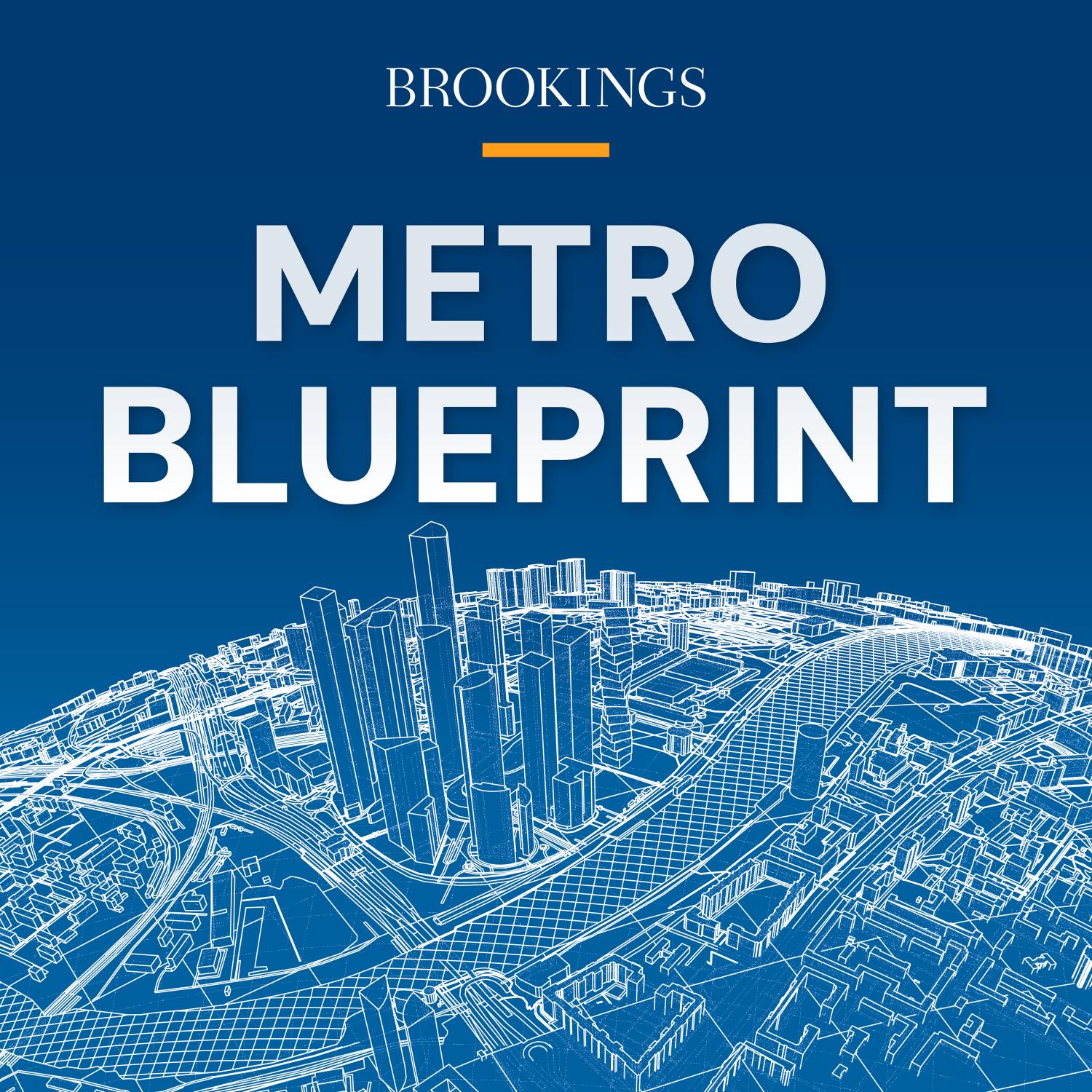
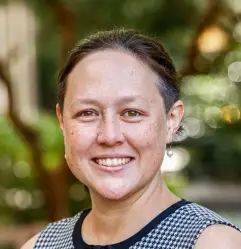

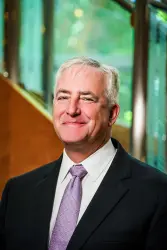
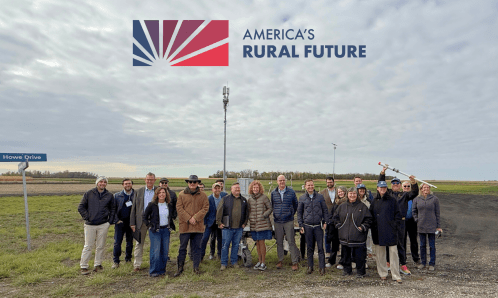
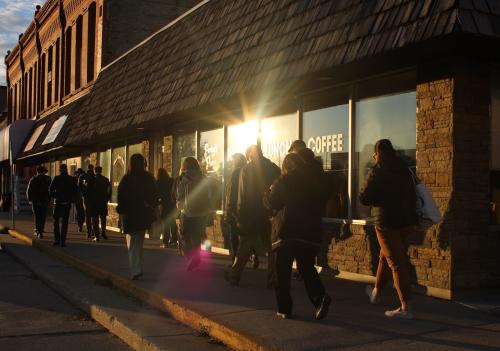

Commentary
PodcastSt. Louis shows how cities can break the “urban doom loop”
Listen on
Metro Blueprint
May 21, 2025